Ditapis dengan
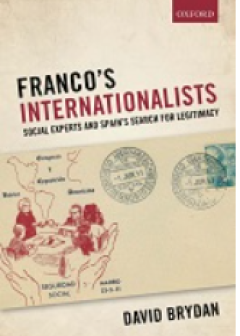
E-book Franco's Internationalists : Social Experts and Spain's Search for Leg…
In May 1951, Francisco Franco attended an international social security congressin Madrid. In the audience were experts and officials from across Spain, LatinAmerica, and western Europe, including ministers from various foreign govern-ments and representatives from international bodies such as the InternationalLabour Organization (ILO). Addressing the conference, Franco told delegates thattwo f…
- Edisi
- -
- ISBN/ISSN
- 9780198834595
- Deskripsi Fisik
- 215 hlm
- Judul Seri
- -
- No. Panggil
- 946 BRY f
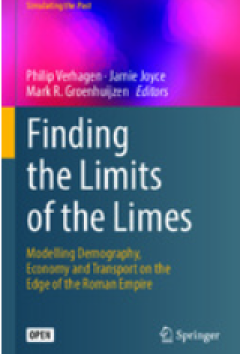
E-book Finding the Limits of the Limes : Modelling Demography, Economy and Tr…
The Dutch limes zone roughly comprises a 50 km wide strip in the middle of the Netherlands, stretching from the North Sea until Germany over a distance of approximately 150 km from west to east. To the north, the zone is bordered by the course of the Rhine, which was established as the northern frontier of the Roman Empire around the middle of the first century CE. The Romans never …
- Edisi
- -
- ISBN/ISSN
- 9783030045760
- Deskripsi Fisik
- 339 hlm
- Judul Seri
- -
- No. Panggil
- 902 VER f
E-book The Spectral Arctic : A History of dreams and ghosts in polar exploration
In popular myth Nansen is the archetypal Scandinavian polar explorer – a manly, no- nonsense hero with little time for the sentimentality or plodding amateurism of his British contemporaries.1 However, Nansen’s account of this expedition, Farthest North (1897), reveals someone with a deeply romantic outlook whose musings on the Arctic ‘dreamland’ have much in common with the…
- Edisi
- -
- ISBN/ISSN
- 978177352452
- Deskripsi Fisik
- 278 hlm
- Judul Seri
- -
- No. Panggil
- 998 MCC t
E-book Global History and New Polycentric Approaches : Europe, Asia and the A…
We believe that by joining forces and harmonizing diverse theories, sources and methods of different academic traditions like those from China and Japan, the field of global history receives a new impulse through diverse case studies. The constant participation of special-ists in this field is crucial, as they share their experiences and new …
- Edisi
- -
- ISBN/ISSN
- 9789811040535
- Deskripsi Fisik
- 367 hlm
- Judul Seri
- -
- No. Panggil
- 909.5 DEP g
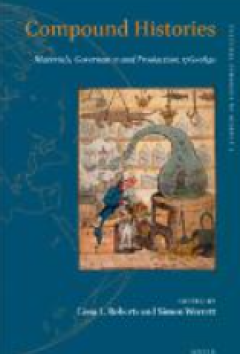
E-book Compound Histories : Materials, Governance and Production, 1760 1840
Power, transformation, promise, subjugation: terms that might easily be invoked to describe the decades between 1760 and 1840. Together they point toward the multi-faceted developments through which Europe took on its modern character and dominant position in the world – what this volume refers to as ‘compound histories’. Simultaneously …
- Edisi
- -
- ISBN/ISSN
- 9789004325562
- Deskripsi Fisik
- 402 hlm
- Judul Seri
- -
- No. Panggil
- 902 WER c
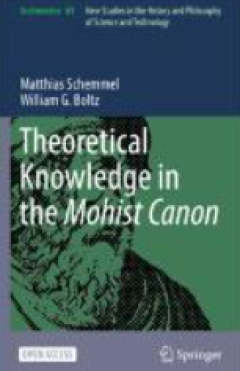
E-book Theoretical Knowledge in the Mohist Canon
Anyone undertaking a long-term historical study of any particular field of human activity is confronted with the difficulty that the contents and boundaries of that field are inevitably fluid and change over time. The historical study of science is no exception to this. Is it possible to conceptualize science broadly enough to include what has traditionally been considered sci…
- Edisi
- -
- ISBN/ISSN
- 9783031087974
- Deskripsi Fisik
- 215 hlm
- Judul Seri
- -
- No. Panggil
- 931 SCH t
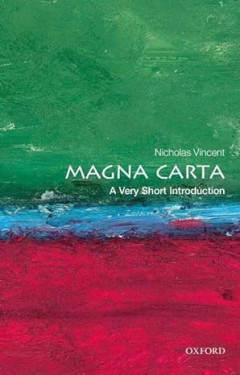
E-book Magna Carta: A Very Short Introduction
The Magna Carta is arguably the greatest constitutional document in recorded history, yet few people today understand either its contents or its context. This Very Short Introduction, which includes a full English translation of the 1215 Magna Carta, introduces the document to a modern audience, explaining its origins in the troubled reign of King John, and tracing the significant role that it …
- Edisi
- -
- ISBN/ISSN
- 9780199582877
- Deskripsi Fisik
- 288 halaman
- Judul Seri
- -
- No. Panggil
- 323.01 VIN m
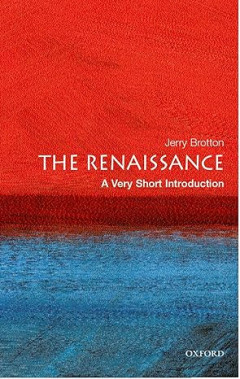
E-book The Renaissance: A Very Short Introduction
More than ever before, the Renaissance stands out as one of the defining moments in world history. Between 1400 and 1600, European perceptions of society, culture, politics and even humanity itself emerged in ways that continue to affect not only Europe but the entire world. In this wide-ranging exploration of the Renaissance, Jerry Brotton shows the period as a time of unprecedented intellect…
- Edisi
- -
- ISBN/ISSN
- 0192801635
- Deskripsi Fisik
- 160 halaman
- Judul Seri
- -
- No. Panggil
- 909.07 BRO t 002830-eB-0122

E-book Byzantium: A Very Short Introduction
After surviving the fifth century fall of the Western European Roman Empire, the Byzantine Empire flourished as one of the most powerful economic, cultural, and military forces in Europe for a thousand years. In this Very Short Introduction Peter Sarris introduces the reader to the unique fusion of Roman political culture, Greek intellectual tradition and Christian faith that took place in t…
- Edisi
- -
- ISBN/ISSN
- 9780199236114
- Deskripsi Fisik
- 322 halaman
- Judul Seri
- -
- No. Panggil
- 949.5 SAR b
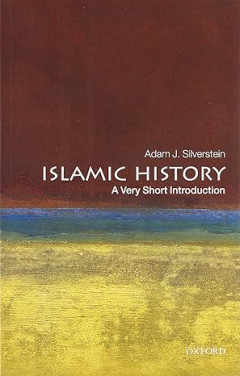
E-book Islamic History: A Very Short Introduction
Opening with a lucid overview of the rise and spread of Islam, from the seventh to the twenty-first century, this Very Short Introduction introduces the story of Islamic history, charting the evolution of what was originally a small, localized community of believers into an international religion with over a billion adherents. The book examines how Islam rose from the obscurity of seventh-centu…
- Edisi
- -
- ISBN/ISSN
- 9780199545728
- Deskripsi Fisik
- 152 halaman
- Judul Seri
- -
- No. Panggil
- 297.6 SIL i
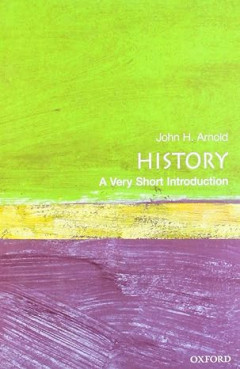
E-book History: A Very Short Introduction
There are many stories we can tell about the past, and we are not, perhaps, as free as we might imagine in our choice of which stories to tell, or where those stories end. John Arnold's addition to Oxford's popular Very Short Introductions series is a stimulating essay about how people study and understand history. The book begins by inviting us to think about various questions provoked by our …
- Edisi
- -
- ISBN/ISSN
- 9780192853523
- Deskripsi Fisik
- 152 halaman
- Judul Seri
- -
- No. Panggil
- 900.0 ARN a
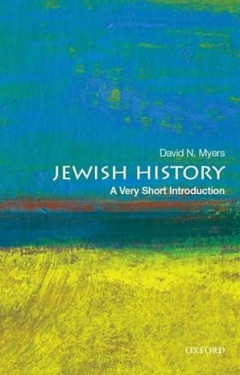
E-book Jewish History: A Very Short Introduction
How have the Jews survived? For millennia, they have defied odds by overcoming the travails of exile, persecution, and recurring plans for their annihilation. Many have attempted to explain this singular success as a result of divine intervention. In this engaging book, David N. Myers charts the long journey of the Jews through history. At the same time, it points to two unlikely-and decidedly …
- Edisi
- -
- ISBN/ISSN
- 9780199912858
- Deskripsi Fisik
- 311 halaman
- Judul Seri
- -
- No. Panggil
- 909 MYE j
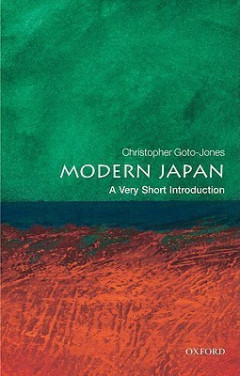
Ebook Modern Japan: A Very Short Introduction
Japan is arguably today's most successful industrial economy, combining almost unprecedented affluence with social stability and apparent harmony. Japanese goods and cultural products--from animated movies and computer games to cars, semiconductors, and management techniques--are consumed around the world. In many ways, Japan is an icon of the modern world, and yet it remains something of an en…
- Edisi
- -
- ISBN/ISSN
- 9780199235608
- Deskripsi Fisik
- 177 halaman
- Judul Seri
- -
- No. Panggil
- 952 GOT m 002858-eB-0122
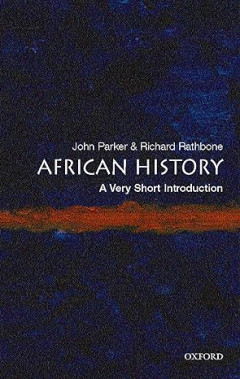
E-book African History: A Very Short Introduction
This Very Short Introduction looks at Africa's past and reflects on the changing ways it has been imagined and represented, both in Africa and beyond. The author illustrates important aspects of Africa's history with a range of fascinating historical examples, drawn from over 5 millennia across this vast continent. The multitude of topics that the reader will learn about in this succinct work i…
- Edisi
- -
- ISBN/ISSN
- 9780192802484
- Deskripsi Fisik
- 185 halaman
- Judul Seri
- -
- No. Panggil
- 960 PAR a 002904-eB-0122
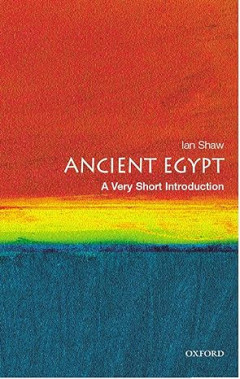
E-book Ancient Egypt: A Very Short Introduction
The ancient Egyptians are an enduring source of fascination--mummies and pyramids, curses and rituals have captured our imaginations for generations. We all have a mental picture of ancient Egypt, but is it the right one? How much do we really know about this once great civilization? In this absorbing introduction, Ian Shaw, one of the foremost authorities on Ancient Egypt, describes how our c…
- Edisi
- -
- ISBN/ISSN
- 0192854194
- Deskripsi Fisik
- 209 halaman
- Judul Seri
- -
- No. Panggil
- 932 SHA a 002907-eB-0122

E-book Norwegian Garden Cities : Yesterday, Today – and Tomorrow?
This book deals with the legacy of Norway’s garden cities. It tracks the origins of the Norwegian garden city movement and discusses the current status of built examples. Through a detailed study of one example, Sinsen Garden City in Oslo, the book links the garden city heritage to a number of ongoing scholarly debates on topics like densification, sustainability, socio-economic conditions, l…
- Edisi
- -
- ISBN/ISSN
- 9788202770075
- Deskripsi Fisik
- 103 hlm
- Judul Seri
- -
- No. Panggil
- 902 SMI n
E-book Archaeology, Anthropology, and Interstellar Communication
Addressing a field that has been dominated by astronomers, physicists, engineers, and computer scientists, the contributors to this collection raise questions that may have been overlooked by physical scientists about the ease of establishing meaningful communication with an extraterrestrial intelligence. These scholars are grappling with some of the enormous challenges that will face humanity …
- Edisi
- -
- ISBN/ISSN
- NASA SP-2013-4413
- Deskripsi Fisik
- 330 halaman
- Judul Seri
- -
- No. Panggil
- 999.0 NAS a
E-book Home-Based Work and Home-Based Workers (1800-2021)
All over the world there are women and men who work and produce for the market within the space of their own homes, or together with neighbours in collective local spaces. They stitch shoes, sew and embellish garments, weave carpets, make baskets, prepare and sell food, assemble electronics and perform computer-based tasks amongst other forms of labour. They pro…
- Edisi
- -
- ISBN/ISSN
- 9789004499614
- Deskripsi Fisik
- 444 hlm
- Judul Seri
- -
- No. Panggil
- 902 NIL h
E-book The Economy of Western Xia : A Study of 11th to 13th Century Tangut Re…
Western Xia (1038–1227) was a dynastic empire in medieval China, based in the city of Xingqing, later Zhongxing (modern-day Yinchuan of Ningxia Hui Autonomous Region). At its height, the Tangut imperium encompassed most of Ningxia, Gansu, northern Shaanxi, western Inner Mongolia, as well as parts of today’s Qinghai and Xinjiang.In the eyes of a historian, one of the m…
- Edisi
- -
- ISBN/ISSN
- 9789004461321
- Deskripsi Fisik
- 602 hlm
- Judul Seri
- -
- No. Panggil
- 950 SHI t
E-book Medieval Welsh Medical Texts : The Recipes
The recipes that form the subject of this edition have been taken from four manuscripts: British Library Additional 14912 (BLAdd), Cardiff 3.242 (Hafod 16, Card), Oxford Bodleian Rawlinson B467 (Rawl), and Oxford Jesus College 111 (the Red Book of Hergest, RBH). All four manuscripts are roughly contemporary, all dating from the end of the fourteenth century or the beginning of the fifteenth.1 I…
- Edisi
- vol. 1
- ISBN/ISSN
- 9781786835499
- Deskripsi Fisik
- 625 hlm
- Judul Seri
- -
- No. Panggil
- 909.5 LUF m
E-book Woodcuts as Reading Guides : How Images Shaped Knowledge Transmission …
The importance of printed books for the dissemination of knowledge was al-ready acknowledged in the early period of print. A chronicle printed by Jan van Doesborch in Antwerp in 1530 praises ‘the noble art of book printing, through which art the world has now come to be so ingenious and has come to know more than she knew a hundred years ago, when there was no printing.’1 The printing press…
- Edisi
- -
- ISBN/ISSN
- 9789048560264
- Deskripsi Fisik
- 428 hlm
- Judul Seri
- -
- No. Panggil
- 902 VAN w
E-book The Juggler of Notre Dame and the Medievalizing of Modernity : The Am…
From the 1890s on, the ground for the reception of the medieval tale Our Lady’s Tumblerin the United States was readied among the elite. Yet the individuals and media involved in the projection of the story in the New World before the cultured public are only loosely comparable to those who from the 1870s on motivated the success of the medieval poem and the fin-de-siècle …
- Edisi
- vol.3
- ISBN/ISSN
- 9781783745234
- Deskripsi Fisik
- 494 hlm
- Judul Seri
- -
- No. Panggil
- 909.07 ZIO t
E-book Vidding : A History
n 2005, YouTube went live as a quick and easy (and apparently free to use) way of sharing video on the Internet, with other video hosting and streaming services like Imeem, Vimeo, and Blip soon to follow. The rise of online distribution kicked off an interest in DIY video and “user-generated content,” itself a phrase that went mainstream in …
- Edisi
- -
- ISBN/ISSN
- 9780472902590
- Deskripsi Fisik
- 277 hlm
- Judul Seri
- -
- No. Panggil
- 902 COP v
E-book Epigrafia tra erudizione antiquaria e scienza storica : Ad honorem Det…
Io, come sapete, sono stato Soprintendente di Firenze per poco meno di venti anni, dal 1988 al 2006; e in un periodo così lungo ho avuto rapporti frequenti di amicizia e di collaborazione con Detlef Heikamp, questo tedesco di Bre-ma, cittadino del mondo, che ha scelto Firenze come città della vita e degli studi. Essendo per lui la vita e gli studi una unità inscindibile.Ricordo il 1994, il 2…
- Edisi
- -
- ISBN/ISSN
- 9788864538341
- Deskripsi Fisik
- 265 hlm
- Judul Seri
- -
- No. Panggil
- 907 PAO e
E-book Trajectories of Memory : Excavating the Past in Indonesia
n this dense passage, the narrator begins by recalling his deceased father’s words about justice and personal freedom. Yet for him, the very effort required to voice his father’s advice marks the transience of sensory per-ception and the beginning of memory: it ends in apprehension about the precarity of memory in the passage of time.The story traces the interplay of sense, memo…
- Edisi
- -
- ISBN/ISSN
- 9789819919956
- Deskripsi Fisik
- 318 hlm
- Judul Seri
- -
- No. Panggil
- 959.8 ABD t
E-book Horos : Ancient Boundaries and the Ecology of Stone
The market today resembles a Leviathan, a great beast growing in accordance with no law outside of the vain rapacity of its uncanny monstrosity, extending its boundaries beyond the nation-state, beyond government intervention, beyond ecologically safe limits and beyond our will to enter into it. It has become properly automatic, functioning for no purpose outside of itsel…
- Edisi
- -
- ISBN/ISSN
- 9781800642683
- Deskripsi Fisik
- 351 hlm
- Judul Seri
- -
- No. Panggil
- 938 POT h

E-book Egyptian Mythology: Gods, Pharaohs and Book of the Dead of Egyptian My…
From at least 4000 BCE to the death of Cleopatra VII in 30 CE, Egyptian Mythology was the foundation of ancient Egyptian culture. Spanning over large dominions as distant as the Roman Empire and the Greco-Roman realm, Egyptian mythology was a prevailing entity. Goddesses like Isis were worshiped not only by the natives of Egypt but also those of England and Afghanistan.
- Edisi
- -
- ISBN/ISSN
- -
- Deskripsi Fisik
- 80 halaman, ilus.
- Judul Seri
- -
- No. Panggil
- 932 WEA e

E-book Tutankhamun: Egypt's Most Famous Pharaoh
- Edisi
- -
- ISBN/ISSN
- 9781842432402
- Deskripsi Fisik
- 160 halaman, illus.
- Judul Seri
- -
- No. Panggil
- 932 PRI t
- Edisi
- -
- ISBN/ISSN
- 9781842432402
- Deskripsi Fisik
- 160 halaman, illus.
- Judul Seri
- -
- No. Panggil
- 932 PRI t
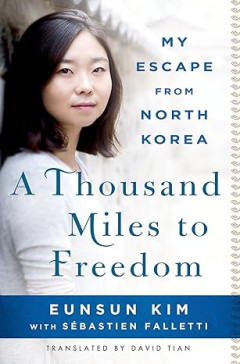
E-book A Thousand Miles to Freedom: My Escape from North Korea
Eunsun Kim was born in North Korea, one of the most secretive and oppressive countries in the modern world. As a child Eunsun loved her country...despite her school field trips to public executions, daily self-criticism sessions, and the increasing gnaw of hunger as the country-wide famine escalated. By the time she was eleven years old, Eunsun's father and grandparents had died of starvatio…
- Edisi
- -
- ISBN/ISSN
- -
- Deskripsi Fisik
- 241 halaman
- Judul Seri
- -
- No. Panggil
- 951.9 KIM a

E-book North Korea: State of Paranoia: A Modern History
North Korea is a country that continues to make headlines - arousing curiosity and fear in equal measure. The world's most secretive nuclear power, it is a nation that still has Gulag-style prison camps, no internet and bans its people from talking to foreigners without official approval. In this remarkable and eye-opening book, internationally bestselling author Paul French examines in forensi…
- Edisi
- -
- ISBN/ISSN
- 9781780329482
- Deskripsi Fisik
- 482 halaman
- Judul Seri
- -
- No. Panggil
- 951.9 FRE n

E-book A History of Byzantium
This book is a concise narrative of Byzantine history from the time of Constantine the Great (AD 306) to the fall of Constantinople in 1453.
- Edisi
- -
- ISBN/ISSN
- 0631235132
- Deskripsi Fisik
- 397 halaman
- Judul Seri
- -
- No. Panggil
- 949.5 GRE a
E-book Microhistories of Technology : Making the World
Standard definitions of the word technology pose a challenge for anyone interested in developing a global history of technology.22 Today, “technol-ogy” is strongly associated with smartphones, computers, and other digi-tal, high-tech solutions. In contrast to this connotation, this book embraces every form of technology, from the pejoratively named “low-tech” solu-tions to the often exa…
- Edisi
- -
- ISBN/ISSN
- 9783031228131
- Deskripsi Fisik
- 300 hlm
- Judul Seri
- -
- No. Panggil
- 609 HAR h
E-book Rereading Travellers to the East : Shaping Identities and Building the…
At least since the historiographical renewal brought about, among others, by the works of Franco Venturi (1973), the events of the century leading to the R isorgimento and the R isorgimento itself have been placed in the context of cultural exchanges involving European and extra-European intellectuals, trav-ellers, politicians and revolutionaries. In this historiographical…
- Edisi
- -
- ISBN/ISSN
- 9788855185790
- Deskripsi Fisik
- 234 hlm
- Judul Seri
- -
- No. Panggil
- 945 FAL r
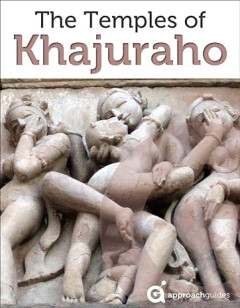
E-book The Temples of Khajuraho
The magnificent 10th-12th century Hindu temples of Khajuraho — with their soaring towers and engaging sculptures — represent the pinnacle of the North Indian temple style. Still infused with their historical magic, they are yours to discover.
- Edisi
- -
- ISBN/ISSN
- -
- Deskripsi Fisik
- 26 halaman
- Judul Seri
- -
- No. Panggil
- 934 APP t
E-book Islamic Shangri-La : Inter-Asian Relations and Lhasa’s Muslim Commun…
In October 1936, the British Resident Frederick Chapman, or “Freddie” as he was known by his close associates, received an invitation to a game of soccer from a team calling themselves Lhasa United. The British Diplomatic Mission in Lhasa, unable to resist such a summons, hastily cobbled together a team of four British officials, four of their Sikkimese clerks, and a few of their …
- Edisi
- -
- ISBN/ISSN
- 9780520299733
- Deskripsi Fisik
- 260 hlm
- Judul Seri
- -
- No. Panggil
- 954.92 ATW i
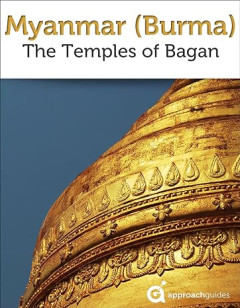
E-book Myanmar (Burma): The Temples of Bagan
Bagan, the ancient Buddhist capital in central Myanmar (Burma) that thrived from 850-1300, is one of the most magnificent and inspiring sites in Southeast Asia. It is yours to uncover.
- Edisi
- -
- ISBN/ISSN
- -
- Deskripsi Fisik
- 37 halaman
- Judul Seri
- -
- No. Panggil
- 959.1 APP m

E-book Thailand: Temples of Bangkok, Sukhothai & Ayutthaya
The temples of Thailand — overflowing with golden Buddhas, soaring spires and glistening surfaces of infinite complexity — stir the spirit, inviting contemplation and wonder. This Approach Guide reveals the country’s best art and architecture from its three great historical capitals: Sukhothai (1238-1368), Ayutthaya (1350-1767), and Bangkok (1782-present). It is yours to discover.
- Edisi
- -
- ISBN/ISSN
- -
- Deskripsi Fisik
- 52 halaman
- Judul Seri
- -
- No. Panggil
- 959.3 APP t

E-book Vietnam Revealed: The Royal Tombs of Hue
A fantastic collection of royal tombs sits solemnly along the banks of the Perfume river, upstream of Hue to the southwest. They were built by the Nguyen dynasty — which ruled over a unified Vietnam from 1802-1945 — to maintain their legacy for ages to come. Named a UNESCO World Heritage Site in 1993, the tombs inspire with their perfectly-integrated natural surroundings, captivating dragon…
- Edisi
- -
- ISBN/ISSN
- -
- Deskripsi Fisik
- 46 halaman
- Judul Seri
- -
- No. Panggil
- 959.7 APP v

E-book Cambodia: Temples of Angkor
With insightful profiles for 23 of Angkor's top temples and nearly 200 high-resolution images, this is the definitive travel guide to Angkor, Cambodia's premier World Heritage destination. Angkor — the capital of the Khmer empire that thrived for 500 years from 802-1327 — is one of the most magnificent sites in Southeast Asia. The ancient city’s temples inspire with their innovative ar…
- Edisi
- -
- ISBN/ISSN
- -
- Deskripsi Fisik
- 55 halaman
- Judul Seri
- -
- No. Panggil
- 959.6 APP c
E-book Connecting Territories : Exploring People and Nature, 1700–1850
The final decades of the 18th century became a crucial period for the differ-ent fields of natural history and related disciplines of ethnology and archaeol-ogy, as academic subjects in light of the advancement of Linnaean systematic classification in botany and zoology.5 The perception and systematization of the natural world went through a paradigmatic shift as a result. Collections and the p…
- Edisi
- -
- ISBN/ISSN
- 9789004412477
- Deskripsi Fisik
- 279 hlm
- Judul Seri
- -
- No. Panggil
- 508 BAU c
E-book Curious Encounters : Voyaging, Collecting, and Making Knowledge in the…
Our histories of global exploration and encounter in the long eigh-teenth century are often drawn from the scientific voyages of discovery and their richly illustrated books, like John Ross’s A Voyage of Discovery(1819). Ross voyaged in the Enlightenment tradition of Bougainville and Cook, who had returned to Europe in ships laden with knowledge in the form …
- Edisi
- -
- ISBN/ISSN
- 9781487503673
- Deskripsi Fisik
- 255 hlm
- Judul Seri
- -
- No. Panggil
- 909.81 BRA c

E-book India: The Ancient Past: A History of the Indian Sub-Continent from c.…
This carefully crafted study presents the fascinating story of the development and establishment of India’s culture and civilization from early pre-history through to the early second millennium. Encompassing topics such as the Harappan Civilization, the rise of Hindu culture, the influx of Islam in the eighth and the eleventh/twelfth centuries and key empires, states and dynasties, India:…
- Edisi
- -
- ISBN/ISSN
- 9780415356169
- Deskripsi Fisik
- 303 halaman
- Judul Seri
- -
- No. Panggil
- 934 AVA i

E-book A Short History of Japan: From samurai to Sony
Japan is a country of contradictions and extremes. It is a country of age-old practices and cutting edge technology, strong martial traditions and refined artistic accomplishments. Few countries have been the subject of so much attention yet remain so elusive. Japan is an island nation defined by its close proximity to, yet isolation from the Asian mainland. Throughout history, ideas adopted fr…
- Edisi
- -
- ISBN/ISSN
- 9477551705
- Deskripsi Fisik
- 264 halaman, ilus.
- Judul Seri
- -
- No. Panggil
- 952 AND a
E-book Between Manuscript and Print : Transcultural Perspectives, ca. 1400–…
Libraries and research institutions around the world hold countless manuscripts and early printed books.1 Some of the most prestigious and beautiful reading rooms are dedicated to these rare materials. Even smaller institutions often have their own division and sometimes a separate reading room or area for these holdings. While these smaller institutions often only have one reading roo…
- Edisi
- -
- ISBN/ISSN
- 9783111242699
- Deskripsi Fisik
- 249 hlm
- Judul Seri
- -
- No. Panggil
- 902 BRO b
E-book Payment and philanthropy in British healthcare, 1918–48
In 1948 an animated public information film called Your Very Good Health explained the benefits of Britain’s soon-to-be-introduced National Health Service (NHS).1 It portrayed two different categories of hospital patient. The central character, Charley, says he is ‘on the panel’ as he cycles through an optimistic impression of a new town.2The narrator asks him to imagine that he fell off …
- Edisi
- -
- ISBN/ISSN
- 9781526114358
- Deskripsi Fisik
- 235 hlm
- Judul Seri
- -
- No. Panggil
- 902 GOS p
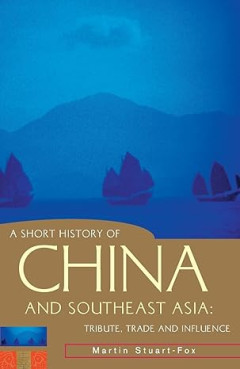
E-book A Short History of China and Southeast Asia: Tribute, Trade and Influence
This informative but concise history of China and Southeast Asia is perfect for travelers, students, teachers, and businesspeople. Portable and attractively designed, it includes color illustrations, maps, and a brief history of the region. Explored are relations between China and Southeast Asia across two millennia; patterns of diplomacy, commercial networks, and migration; and how these have …
- Edisi
- -
- ISBN/ISSN
- 9781864489545
- Deskripsi Fisik
- 289 halaman
- Judul Seri
- -
- No. Panggil
- 931 STU a
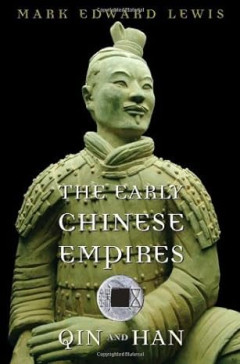
E-book The Early Chinese Empires: Qin and Han
In 221 B.C. the First Emperor of Qin unified what would become the heart of a Chinese empire whose major features would endure for two millennia. In the first of a six-volume series on the history of imperial China, Lewis highlights the key challenges facing the court officials and scholars who set about governing an empire of such scale and diversity.
- Edisi
- -
- ISBN/ISSN
- 9780674057340
- Deskripsi Fisik
- 334 halaman
- Judul Seri
- -
- No. Panggil
- 931 LEW t

E-book The Troubled Empire: China in the Yuan and Ming Dynasties
"The Mongol takeover in the 1270s changed the course of Chinese history. The Confucian empire—a millennium and a half in the making—was suddenly thrust under foreign occupation. What China had been before its reunification as the Yuan dynasty in 1279 was no longer what it would be in the future. Four centuries later, another wave of steppe invaders would replace the Ming dynasty with yet an…
- Edisi
- -
- ISBN/ISSN
- B00IZ99M4S
- Deskripsi Fisik
- 336 halaman
- Judul Seri
- -
- No. Panggil
- 951 BRO t
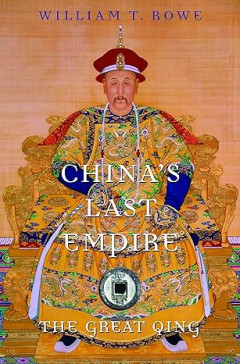
E-book China's Last Empire: The Great Qing
In a brisk revisionist history, William Rowe challenges the standard narrative of Qing China as a decadent, inward-looking state that failed to keep pace with the modern West. The Great Qing was the second major Chinese empire ruled by foreigners. Three strong Manchu emperors worked diligently to secure an alliance with the conquered Ming gentry, though many of their social edicts—especial…
- Edisi
- -
- ISBN/ISSN
- 9780674066243
- Deskripsi Fisik
- 369 halaman
- Judul Seri
- -
- No. Panggil
- 931 ROW c
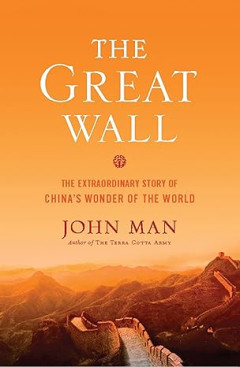
E-book The Great Wall: The Extraordinary Story of China's Wonder of the World
The Great Wall of China is a wonder of the world. Every year, hundreds of thousands of tourists take the five-mile journey from Beijing to climb its battlements. While myriad photographs have made this extraordinary landmark familiar to millions more, its story remains mysterious and steeped in myth. In this riveting account, John Man travels the entire length of the Great Wall and across two m…
- Edisi
- -
- ISBN/ISSN
- B001NRNIP8
- Deskripsi Fisik
- 349 halaman
- Judul Seri
- -
- No. Panggil
- 931 MAN t
 Karya Umum
Karya Umum  Filsafat
Filsafat  Agama
Agama  Ilmu-ilmu Sosial
Ilmu-ilmu Sosial  Bahasa
Bahasa  Ilmu-ilmu Murni
Ilmu-ilmu Murni  Ilmu-ilmu Terapan
Ilmu-ilmu Terapan  Kesenian, Hiburan, dan Olahraga
Kesenian, Hiburan, dan Olahraga  Kesusastraan
Kesusastraan  Geografi dan Sejarah
Geografi dan Sejarah